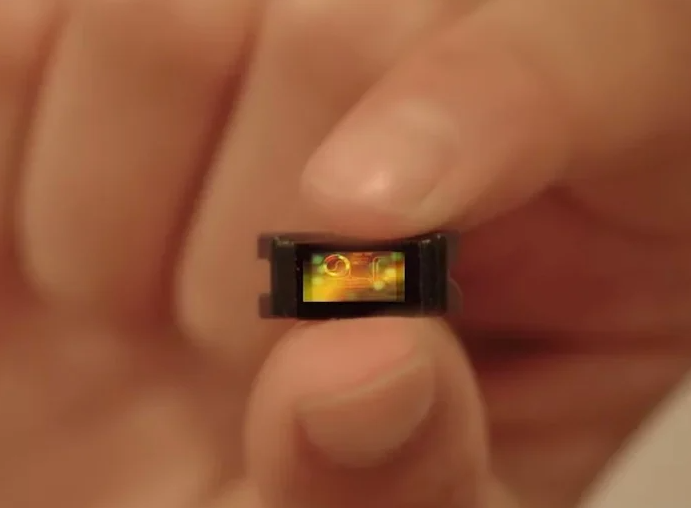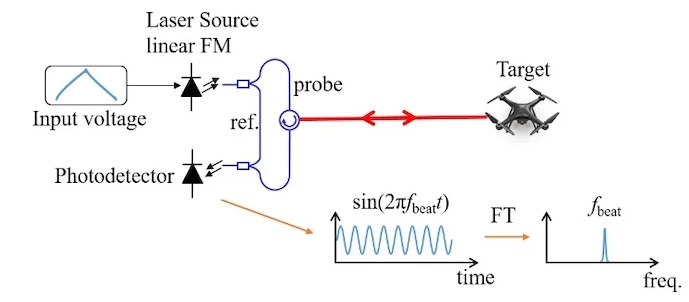
0755-83687076
Author: admin Time:2021-12-16 Click:
Sensor and automation technology manufacturer Hokuyo Automation has partnered with machine vision developer SiLC Technologies (SiLC) to establish a new project for 4D Light Detection and Ranging (LiDAR) solutions. Hokuyo aims to improve machine vision systems for targeted industrial automation and robotics applications.
As humans, the ability to perceive and express a variety of emotions in different ways comes naturally; however, trying to create the same responses within machines is a challenge that many researchers and companies are trying to overcome, especially in the industrial and automotive fields.
Machine vision (MV) technology is commonly used in industrial robots and automotive sensor systems. Machine vision allows specific cameras to provide automatic analysis of objects at both short and long distances.

SiLC's 4D LiDAR intelligent vision chip. Image provided by SiLC.
As previously mentioned, SiLC and Hokuyo Automation are teaming up to bring SiLC's 4D+ intelligent vision chip into mass production. Over the years, Hokuyo has established a range of LiDAR and obstacle detection devices to address many of the challenges in improving the sensing capabilities of autonomous vehicles. With Hokuyo's customer base and extensive portfolio of LiDAR and obstacle detection products, SiLC can accelerate the path to mass production.
4D LiDAR Machine Vision Chip
SiLC has developed the industry's first fully integrated coherent 4D LiDAR chip based on laser technology, using Frequency Modulated Continuous Wave (FMCW).

Example of FMCW in a LiDAR system. Image provided by the University of California, Berkeley.
Although you may have heard a lot about 3D LiDAR, you might not have heard about 4D LiDAR. Generally speaking, 4D LiDAR builds upon the FMCW technology based on 3D vision, but adds a critical vector in measurement to move the 3D module to the fourth dimension.
With 4D, the device can involve polarization intensity, velocity, distance/range, and resolution to make machine senses closer to matching human perception.
The technology behind the 4D vision chip integrates all the necessary LiDAR functions, such as coherent light sources and optical signal processing. SiLC's solution can also extract additional information from the returning photons before it is converted into electronics.
The transmitted and received light wavelengths pass through coherent mixing and amplification detectors, which prevent LiDAR interference, such as light refraction and sunlight. Then, the photodetector performs a fast Fourier transform to extract distance and velocity signals from the received waveform.
Comparing 4D vs. 3D LiDAR
Current 3D vision-based LiDAR system designs incorporate time-of-flight (ToF) sensors. These sensors operate at visible light wavelengths of approximately 905nm and are considered eye-safe.

Relationship between wavelength and visible light. Provided by SiLC.
The functionality of Time-of-Flight (ToF) includes sending a laser pulse once every microsecond to directly measure the time difference between the pulse emitted towards an object and its return.
One drawback of 3D ToF solutions is sunlight interference. When performing ToF detection, daylight is a challenge because light can reflect or refract off certain moving objects, making it difficult to determine the distance from the sensor to the object. Another limitation of ToF is range; once objects are close to 1 kilometer away, ToF cannot measure with the same precision.
By introducing a 4D solution, the wavelength is increased to 1550nm, which enhances eye safety and reduces solar interference. Calculating the range or distance of an object is a direct function of the frequency shift of the returned signal, while the speed adds to the frequency shift of the returning signal. However, if they are moving simultaneously, known as "dual chirp," this resolves the issue of distance and speed.
ToF measurements remain popular in the automotive industry because they have been established for decades. ToF cameras can be used in conjunction with Advanced Driver-Assistance Systems (ADAS) sensors to help drivers with lane detection, blind spots, and the detection of nearby objects.
At the end of the day, both 3D and 4D have their own advantages and disadvantages. Mass production of Frequency Modulated Continuous Wave (FMCW) based LiDAR ICs will take time. As a preferred technology, FMCW must achieve higher integration and cost-effectiveness on a single chip. In the long run, 4D is certain to surpass 3D ToF as the detection solution.